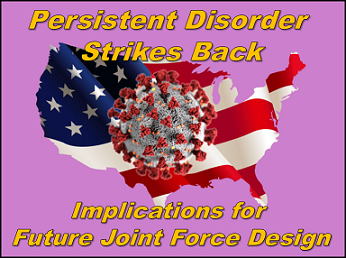[Editor’s Note: Today’s post by proclaimed Mad Scientist and returning guest blogger Jeff Becker explores the ramifications of COVID-19 as a manifestation of persistent disorder and how it is impacting contested norms with our near-peer adversaries and affecting the trajectory of the Joint Operating Environment (JOE).  Globally disruptive events like the pandemic threaten to overwhelm and skew our perspective. As Mr. Becker’s post observes, however, we must resist solely focusing on persistent disorder and instead build a Joint Force that is resilient and capable of simultaneously countering persistent disorder while continuing to challenge and disrupt our adversaries’ advances. Mr. Ian Sullivan recently pointed out that COVID-19 is likely to accelerate great power competition. In the future, we will face additional disruptive convergences or event (threat) stacks — our Joint Force must be ready and able to counter and, as necessary, defeat our adversaries who seek to exploit the effects of these disruptions. Enjoy!]
Globally disruptive events like the pandemic threaten to overwhelm and skew our perspective. As Mr. Becker’s post observes, however, we must resist solely focusing on persistent disorder and instead build a Joint Force that is resilient and capable of simultaneously countering persistent disorder while continuing to challenge and disrupt our adversaries’ advances. Mr. Ian Sullivan recently pointed out that COVID-19 is likely to accelerate great power competition. In the future, we will face additional disruptive convergences or event (threat) stacks — our Joint Force must be ready and able to counter and, as necessary, defeat our adversaries who seek to exploit the effects of these disruptions. Enjoy!]
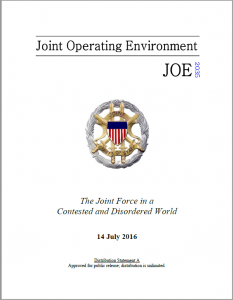 The 2016 edition of the Joint Operating Environment described a future defined by twin overarching challenges: contested norms and persistent disorder. This long term perspective on strategic challenges highlights the two major classes of issues that will confront the United States and its global partners and interests out to 2035. For contested norms, adversaries will credibly challenge the rules and agreements that define the international order. For persistent disorder, systemic shocks upset the ability of states and societies to provide functioning, stable, and legitimate governance – with widespread unrest, violence, and economic privation leading to conflict and war.
The 2016 edition of the Joint Operating Environment described a future defined by twin overarching challenges: contested norms and persistent disorder. This long term perspective on strategic challenges highlights the two major classes of issues that will confront the United States and its global partners and interests out to 2035. For contested norms, adversaries will credibly challenge the rules and agreements that define the international order. For persistent disorder, systemic shocks upset the ability of states and societies to provide functioning, stable, and legitimate governance – with widespread unrest, violence, and economic privation leading to conflict and war.
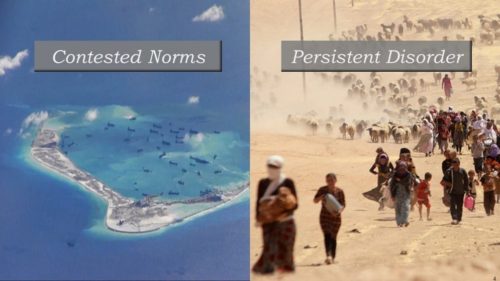
 In the four years since JOE 2016 was published, the Joint Force has deemphasized force development and design efforts focused on countering the persistent (some might call it eternal) disorder of Middle East insurgency and terrorism. Instead, it has increasingly focused on great power competition, thinking through the concepts and capabilities required to counter, as the National Security Strategy puts it, a China and Russia seeking to shape a world antithetical to U.S. values and interests.
In the four years since JOE 2016 was published, the Joint Force has deemphasized force development and design efforts focused on countering the persistent (some might call it eternal) disorder of Middle East insurgency and terrorism. Instead, it has increasingly focused on great power competition, thinking through the concepts and capabilities required to counter, as the National Security Strategy puts it, a China and Russia seeking to shape a world antithetical to U.S. values and interests.
This shift has focused the Joint Force and the Services on deterring, competing with, and ultimately defeating the armed forces of Russia, China, and others to moderate and shape their ability to contest norms favorable to the U.S. and its allies and partners. Force design efforts have concentrated on accelerating modernization efforts to solidify competitive advantages and on developing and experimenting with novel operational concepts using these challenging adversaries as our measuring stick.
What does the sudden and urgent re-emergence of persistent disorder – this time in the form of a lethal and dangerous global pandemic – mean for the long-term trajectory of future force development and design efforts?
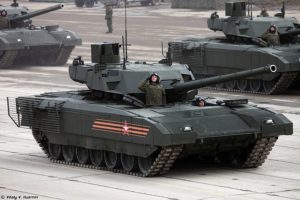 Although the initial reaction might be to reverse, or at least moderate our focus on course and deemphasize great power competition, to do so would be a mistake. I would argue that the Joint Force should continue to orient force design efforts
Although the initial reaction might be to reverse, or at least moderate our focus on course and deemphasize great power competition, to do so would be a mistake. I would argue that the Joint Force should continue to orient force design efforts  on the rapidly modernizing armed forces of competitor states [China and Russia] and that, for the purposes of force development and design, persistent disorder, even at the scale and destructive power exhibited by COVID-19, should not be seen as a priority for thinking through the type of future force we’ll need. Here’s why…
on the rapidly modernizing armed forces of competitor states [China and Russia] and that, for the purposes of force development and design, persistent disorder, even at the scale and destructive power exhibited by COVID-19, should not be seen as a priority for thinking through the type of future force we’ll need. Here’s why…
Military responses to COVID 19 highlight an important distinction between near-term intelligence analysis and operating the force to address the immediate effects of the virus, fighting through a world in which Coronavirus exists, and selecting the most important long term problems and issues that drive the concepts and doctrine we pursue and the capabilities that we will need to support them.
Many weak states will be pushed over the edge by the pandemic. Some strong states will be severely weakened as the disease progresses. COVID-19 will 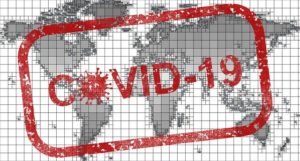 tend to expose the political, economic, and social shortcomings of states large and small, exacerbating and sharpening those fractures that already exist, as well as creating new ones. The pandemic is a stark reminder that even in a world of persistent disorder, the largest and most capable states — including the United States — will be severely challenged to adapt and overcome its predations.
tend to expose the political, economic, and social shortcomings of states large and small, exacerbating and sharpening those fractures that already exist, as well as creating new ones. The pandemic is a stark reminder that even in a world of persistent disorder, the largest and most capable states — including the United States — will be severely challenged to adapt and overcome its predations.
Although disruptive non-state threats such as COVID-19 have demonstrated a troubling tendency to fester and emerge as surprise or strategic shock for the United States, tilting the balance of force development activities towards capabilities designed to counter persistent disorder would risk a world in which China, Russia, and others surge and attempt to decisively shift the international order in highly unfavorable ways.
Even now, less than six months into the crisis, China is moving quickly to take advantage of renewed disorder brought on by the pandemic to accelerate its 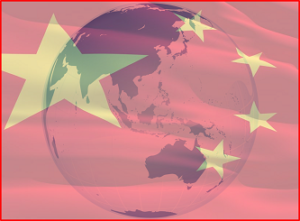 seizure of key global nodes and sources of power and driving to control the South China Sea. Rather than pausing, China appears to see the pandemic as an opportunity to both accelerate and reinforce its efforts to replace global rules with ones that are more to its liking – and threaten to inflict irreparable damage on U.S. and allied interests over time.
seizure of key global nodes and sources of power and driving to control the South China Sea. Rather than pausing, China appears to see the pandemic as an opportunity to both accelerate and reinforce its efforts to replace global rules with ones that are more to its liking – and threaten to inflict irreparable damage on U.S. and allied interests over time.
For Russia, the pandemic will force Putin to walk an even narrower tightrope than it had previously imagined. Although the direct impact of the virus in Russia 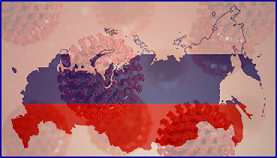 remains unclear, the second-order effects – most notably, the historic collapse of oil prices – mean that many Russian military investments will stall, and are already being cancelled. However, one can rely on Russia to take more punishment than generally considered possible, while continuing to spoil, disrupt, and threaten the freedom and autonomy of those around them.
remains unclear, the second-order effects – most notably, the historic collapse of oil prices – mean that many Russian military investments will stall, and are already being cancelled. However, one can rely on Russia to take more punishment than generally considered possible, while continuing to spoil, disrupt, and threaten the freedom and autonomy of those around them.
JOE 2035 counseled balance between building a force capable of confronting adversaries seeking to contest global norms and one able to deal with the persistent disorder that emerges from fractured and failing states and societies. The Joint Force must simultaneously operate to counter persistent disorder while continuing to challenge and disrupt our adversaries’ advances.
If you enjoyed this post, check out these additional posts by Jeff Becker:
Review our Contagion: COVID-19’s impact on the Operational Environment series of posts:
Read our near-peer competitor assessments:
Jeff Becker is a defense consultant based in Southeast Virginia. He is currently the Senior Futurist at the Joint Concepts Division of the Joint Staff J7. Mr. Becker has over 20 years of direct experience conducting and managing future military studies, analysis, and experimentation projects. Mr. Becker was the primary author of the Joint Staff’s 2016 deep futures study, Joint Operating Environment 2035: The Joint Force in a Contested and Disordered World which surveys science and technology, human, and geopolitical trends and develops their military implications for the Joint Force.
Disclaimer: The views expressed in this blog post are solely those of the author and do not necessarily reflect those of the Department of Defense, Department of the Army, Army Futures Command, or the Training and Doctrine Command.

